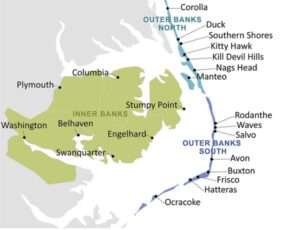Calm after the storm?
ABSTRACT
Coastal communities in North Carolina’s Outer Banks (OBX) depend on tourism as their main economic driver; however, their geographic isolation makes them vulnerable to natural disasters such as hurricanes. Small-scale tourism businesses are keystones in the communities, serving as the primary employers and revenue generators. Additionally, the tourism industry is supported by a workforce within the small population on these islands. Therefore, tourism industry recovery decisions underlie resilience for all community members. History has demonstrated that, despite their vulnerability, community members are motivated to continue (re)building their businesses, homes and community without intention to leave. Yet, there is limited understanding of what influences coastal community members’ recovery decisions. This research thematically analyzes interviews with 28 tourism stakeholders within Ocracoke and Hatteras, two remote tourism-dependent communities in the southern OBX, to examine the relationship between social cohesion, place attachment and risk perception, and how these constructs are influencing recovery decisions following Hurricane Dorian (2019). Additionally, this study explores the compounded impact of the COVID-19 pandemic on these tourism stakeholders’ recovery decisions. Findings from this study could help vulnerable coastal communities like Ocracoke and Hatteras, build resilience against recurring natural disasters and other disturbances.
Map of the OBX (blue) and the Inner Banks (green)
